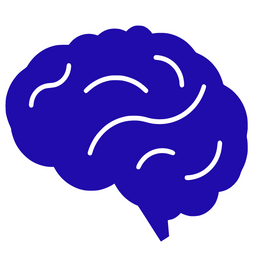If you’re completing the International Baccalaureate (IB) and planning to apply for Australian universities in 2026, your pathway to entry is through the IB to ATAR conversion. This process translates your IB score into an equivalent Australian Tertiary Admission Rank (ATAR), the number used by universities to compare all applicants, whether they studied the HSC, VCE, QCE, or IB.
But here’s the catch: conversion tables can change every year, and universities sometimes have their own additional requirements. In this article, we’ll break down how the conversion works, what’s changing for 2026, and how you can plan ahead for your dream course.
Table Of Contents:
- How Does IB To ATAR Conversion Work?
- What Is Changing For 2026 IB To ATAR Conversion?
- What Are University Specific IB Requirements?
- How Do IB Subjects Compare To Australian Curriculums?
- How To Plan Your University Preferences With IB Results?
- How To Maximise Your IB To ATAR Conversion?
- Conclusion
- Join 5000+ KIS Students — Start Your Free Trial Lesson

How Does IB To ATAR Conversion Work?
The IB Diploma is scored out of 45 points — 42 from your six subjects and 3 from your Extended Essay (EE) and Theory of Knowledge (TOK). To compare IB students with their state-based counterparts, UAC (Universities Admissions Centre) and similar bodies in other states use an annual conversion table.
For example (based on recent years):
- 45 IB points ≈ ATAR 99.95
- 40 IB points ≈ ATAR around 98.00
- 35 IB points ≈ ATAR around 91.00
This means that even a small change in IB points can shift your ATAR significantly.
What Is Changing For 2026 IB To ATAR Conversion?
Each year, the IB to ATAR conversion table is recalculated based on statistical analysis of IB student performance compared to ATAR cohorts. While the changes are usually small, certain score ranges can shift by 0.1–0.3 ATAR points, which could affect cut-offs for competitive courses like Medicine, Law, or Dentistry.
Key trends for recent years:
- Top-end compression: The very top IB scores (44–45) almost always map to ATAR 99.85–99.95.
- Middle range fluctuations: Scores between 32–38 can see small yearly changes due to national performance trends.
- Subject scaling is not direct: Your IB subjects themselves don’t “scale” like in HSC or VCE — only your overall IB total matters.
What Are University Specific IB Requirements?
While your IB score converts to an ATAR for admission ranking, some universities have IB-specific prerequisites. For example:
- Medicine programs may require a minimum IB score (often around 36–38) plus UCAT/Interview performance.
- Certain engineering or science degrees may require HL Maths or HL Chemistry.
- Scholarship eligibility may be based directly on IB points, not the converted ATAR.
Example: The University of Sydney may state “IB 37 with HL Mathematics” for certain courses — even if the ATAR equivalent would be sufficient without that HL subject.
How Do IB Subjects Compare To Australian Curriculums?
Another point of confusion for IB students is how their Higher Level (HL) and Standard Level (SL) subjects compare to Australian Year 12 subjects. Universities sometimes publish equivalence tables:
- HL Maths Analysis & Approaches ≈ HSC Mathematics Extension 1
- SL Chemistry ≈ HSC Chemistry (slightly reduced content depth)
These equivalences matter if your course has assumed knowledge or prerequisite subjects.
How To Plan Your University Preferences With IB Results?
When using your IB results for university entry in 2026:
- Check the official 2026 conversion table as soon as it’s released.
- Cross-reference your converted ATAR with the previous year’s course cut-offs.
- Have preference backups in case your converted ATAR is slightly lower than expected.
- If applying interstate, check each state’s admissions centre for slightly different conversion recognition.
How To Maximise Your IB To ATAR Conversion?
Since only your total IB score is used for conversion, the focus should be on:
- Prioritising subjects where you can gain the biggest grade jump (e.g., pushing a 6 to a 7).
- Using past papers and mark schemes to target specific IB exam expectations.
- Seeking tutoring or study support for subjects with historically low grade boundaries.
Conclusion
The IB to ATAR conversion is the bridge between your international qualification and Australian university entry. For 2026 applicants, staying up to date on conversion tables, understanding university-specific requirements, and strategically planning your preferences can make the difference between getting your first-choice course, or settling for a backup.
And remember: while the conversion number matters, your university application might also involve interviews, portfolios, aptitude tests, or work experience. The IB/ATAR is just one important piece of the puzzle.
What Our Students & Parents Say
600+ Five-Star reviews across all our tutoring programs — hear why below !👇
After more university or IB study tips? Check these out! 👇



FAQs
1. When will the 2026 IB to ATAR conversion table be released?
Usually in December, around the time IB results are released, by UAC and other tertiary admissions centres.
2. Do IB subjects "scale" like HSC or VCE subjects?
No, because your ATAR conversion is based solely on your total IB score, not individual subject scaling.
3. Does the EE/TOK bonus affect ATAR conversion?
Yes, since EE/TOK points are part of your total IB score, losing them can lower your converted ATAR.
4. Do Australian universities prefer IB over HSC or VCE?
No, as the ATAR is designed to standardise all qualifications for fair comparison.






